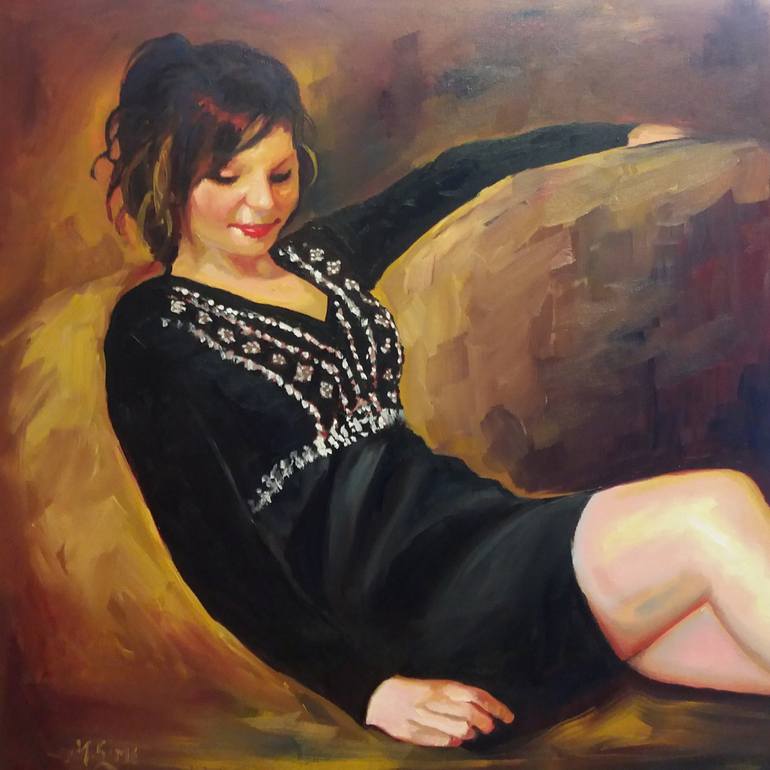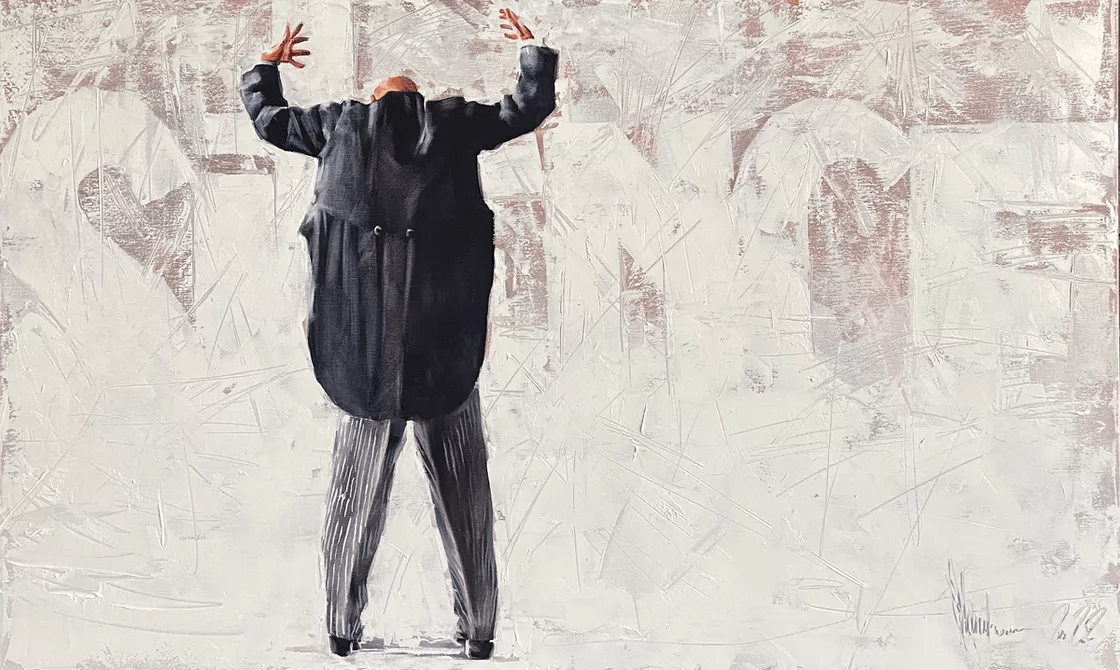Mastering Composition and Shade in Figurative Oil Painting
Mastering Composition and Shade in Figurative Oil Painting
Blog Article
A Trip With the Globe of Metaphorical Oil Painting: Uncovering the Distinct Qualities and Psychological Depth of the Tool

History of Metaphorical Oil Paint
Emerging throughout the late Center Ages and thriving throughout the Renaissance, metaphorical oil paint has an abundant history that reflects both artistic advancement and cultural evolution. Oil paints were utilized in Europe as a method to boost the luminance and deepness of shade in artworks. Musicians such as Jan van Eyck pioneered the medium, demonstrating its prospective to capture complex details and textures, hence permitting for a much more natural representation of the human kind.
As the Renaissance proceeded, renowned figures like Leonardo da Vinci and Michelangelo broadened the borders of figurative oil painting. They highlighted physiological precision and viewpoint, developing jobs that conveyed feeling and narrative deepness. The tool's adaptability permitted testing with light and shadow, leading to the growth of chiaroscuro strategies that further enriched the visual experience.
Distinct Characteristics of the Medium
The evolution of metaphorical oil painting has been significantly affected by the unique qualities of the tool itself. Oil paint, composed of pigments put on hold in oil, uses musicians a remarkable flexibility that enables a wide range of textures and coatings. Its slow drying time enables thorough blending and layering, which can create deepness and luminosity unattainable in various other mediums.
Moreover, oil paint's abundant coloring provides dynamic shades that keep their intensity with time. This particular is important in figurative painting, where catching the nuances of complexion and psychological expressions is vital. The ability to accomplish soft changes and refined gradients improves the natural high quality of subjects, permitting musicians to convey intricate emotional states.
In addition, oil paint adheres well to different surface areas, such as canvas, metal, and timber, expanding the range of imaginative expression. The tool's adaptability supports different techniques, from comprehensive realism to expressive brushwork, enabling artists to explore their specific designs.
Ultimately, the unique homes of oil paint not only improve the visual experience yet additionally empower musicians to communicate profound narratives, making metaphorical oil painting a deeply expressive art form.
Styles and techniques Used
Within the realm of metaphorical oil painting, musicians employ a diverse variety of methods and styles that add to the deepness and splendor of their work. One popular method is polishing, where clear layers of paint are used over dried layers, enabling light to permeate and reflect, boosting luminance and deepness. This method is frequently used to accomplish a sense of realistic look and intricacy in complexion.
One more useful source technique is impasto, where thick layers of paint are used with a combination blade or brush, developing a textured surface area that adds a three-dimensional top quality to the painting. This design can stimulate a natural action, drawing the viewer in with its responsive nature.
Musicians likewise discover different brushwork designs, from fine, thorough strokes that catch detailed features to wider, more expressive strokes that convey activity and emotion (figurative oil painting). The choice of shade combination significantly influences the total mood of an item, with cozy tones commonly passing on sensations of convenience and cool tones recommending moody
Moreover, the combination of chiaroscuro, the contrast in between light and shadow, permits artists to develop moved here dramatic results that enhance the narrative quality of their work. Each strategy and style is thoroughly chosen to boost the audience's experience and understanding.
Psychological Depth in Figurative Art
Psychological depth offers as a keystone in metaphorical art, permitting artists to go beyond plain depiction and involve visitors on a profound level. This psychological resonance is usually accomplished through the nuanced representation of human figures, expressions, and interactions. Artists harness the power of color, shadow, and light to stimulate feelings that resonate deeply with the target market, producing a natural link to the topic.
In figurative oil paint, the detailed layering of paint can show the complexities of human emotion. The option of scheme, whether cozy or great, plays an essential function in setting the mood and ambience of an item. For example, softer tones might stimulate tranquility and check my reference introspection, while bold, contrasting colors can interact tension and drama.

Influential Artists and Their Works
Numerous prominent musicians have significantly formed the landscape of metaphorical oil painting, each contributing one-of-a-kind point of views and techniques that remain to motivate contemporary developers. Amongst these musicians, Lucian Freud sticks out for his intense psychological deepness and raw portrayal of the human kind, typically obscuring the lines in between elegance and decay. Freud's jobs, characterized by thick, impasto brushstrokes, invite audiences to face the complexities of identification and susceptability.

In A Similar Way, Andrew Wyeth's careful realistic look in pieces like "Christina's Globe" catches profound stories within seemingly straightforward structures. His usage of light and shadow evokes a feeling of fond memories and emotional vibration, drawing audiences into the intimate globes he depicts.
In the world of modern-day art, Kehinde Wiley has gotten acknowledgment for his dynamic, epic pictures that test standard ideas of depiction. By positioning people of shade in contexts evocative classical portrait, Wiley's job redefines the canon of art background.
These artists, along with others, have not only enriched figurative oil paint yet have also expanded the discussion bordering culture, emotion, and identity, guaranteeing that the medium continues to be an important type of expression in the art world. figurative oil painting.
Conclusion
In conclusion, metaphorical oil painting continues to be an effective tool that envelops the complexities of human emotion via its rich pigmentation and flexible techniques. The historical development of this art kind, incorporated with its special attributes, enables profound creative expression. Strategies such as glazing and impasto improve the emotional resonance of each piece, while the payments of influential musicians proceed to motivate and shape the discourse bordering this classic category. The trip through metaphorical oil painting reveals its enduring importance in the art globe.
The expedition of metaphorical oil paint supplies an extensive insight into the interplay of technique, feeling, and historical context that specifies this venerable medium. Oil paint, composed of pigments put on hold in oil, uses artists an exceptional versatility that allows for a wide range of surfaces and appearances.Within the world of metaphorical oil painting, artists utilize a varied range of strategies and designs that contribute to the depth and richness of their work.Countless influential musicians have dramatically formed the landscape of metaphorical oil paint, each adding distinct perspectives and strategies that continue to inspire modern developers.In conclusion, figurative oil painting remains a powerful medium that encapsulates the intricacies of human emotion via its abundant coloring and flexible methods.
Report this page